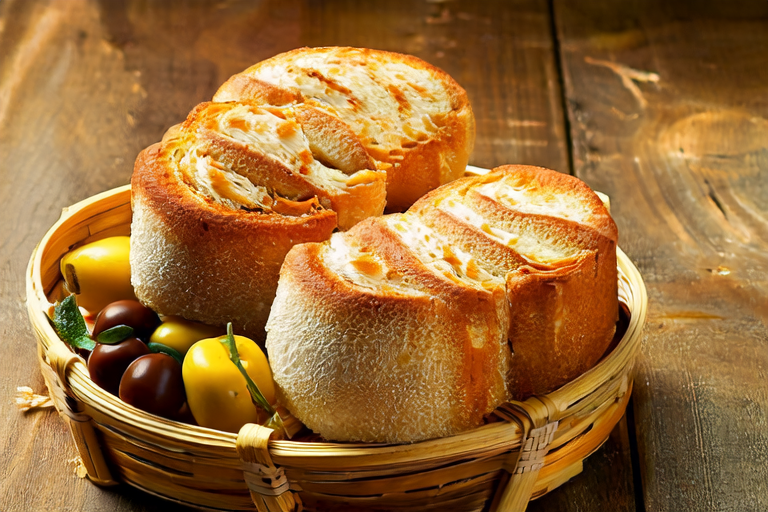- The Art of Bread: A Homemade Sourdough Bakery Special
When it comes to baking, few things can rival the satisfaction of creating your own sourdough bread from scratch. This ancient method of leavening has been cherished for centuries, and its unique tangy flavor and chewy texture make it a favorite among bakers and bread lovers alike. In this article, we will explore the art of making sourdough bread at home, offering a step-by-step guide that even beginners can follow.
Understanding Sourdough
Sourdough is a type of bread made by fermenting dough using naturally occurring lactobacilli and yeast. The process of making sourdough involves cultivating a starter, which is essentially a living culture of wild yeast and bacteria. This starter acts as a leavening agent, causing the dough to rise and develop its characteristic flavor.
The key to successful sourdough baking lies in understanding the science behind the process. The wild yeast and bacteria in the starter consume the sugars in the flour, producing carbon dioxide, which causes the dough to rise. At the same time, the bacteria produce lactic acid, giving the bread its distinctive tangy flavor.
Preparing Your Starter
Before you can begin baking your sourdough bread, you need to prepare a starter. This process takes several days, but it is crucial for achieving the best results. Here’s how you can prepare your starter:
- Day 1: Mix together equal parts of flour and water (about 50 grams each). Cover the mixture loosely and let it sit at room temperature for 24 hours.
- Day 2: Discard half of the starter and feed it with an equal amount of flour and water. Let it sit for another 24 hours.
- Days 3-5: Repeat the feeding process every 24 hours. You should start seeing bubbles forming in the starter, indicating that the yeast is becoming active.
- Day 6: Your starter is now ready to be used in your sourdough recipe. It should have a bubbly consistency and a slight sour smell.
The Sourdough Recipe
Once you have your starter ready, you can proceed with the actual bread-making process. Below is a detailed recipe for a classic sourdough loaf:
Ingredients
- 700g strong white bread flour
- 500g sourdough starter (fed within the last 24 hours)
- 400ml cool water
- 10g salt
Instructions
- Mixing the Dough: In a large mixing bowl, combine the flour and salt. Add the sourdough starter and water, and mix until the ingredients come together to form a shaggy dough. Cover the bowl with a damp cloth or plastic wrap and let it rest for 30 minutes.
- Folding the Dough: After the resting period, gently fold the dough over itself several times. This helps distribute the yeast evenly throughout the dough. Cover the bowl again and let it rest for another 30 minutes.
- Repeat Folding: Repeat the folding process two more times, each time covering the bowl and letting it rest for 30 minutes. This process, known as autolyse, allows the gluten to develop and the flour to absorb the water fully.
- Shaping the Loaf: Once the dough has rested for a total of 90 minutes, it should be smooth and elastic. Turn it out onto a lightly floured surface and shape it into a round ball. Place the shaped loaf on a piece of parchment paper and cover it with a clean, damp cloth. Let it proof for about 3-4 hours, or until it has doubled in size.
- Baking the Bread: Preheat your oven to 230°C (450°F) with a Dutch oven inside. Carefully place the proofed loaf, still on the parchment paper, into the hot Dutch oven. Cover with the lid and bake for 30 minutes. Remove the lid and continue baking for another 15-20 minutes, or until the crust is golden brown and the bread sounds hollow when tapped on the bottom.
- Cooling the Bread: Once baked, remove the bread from the Dutch oven and transfer it to a wire rack to cool completely. This step is crucial as it allows the bread to set properly and develop its full flavor.
Storage and Serving Suggestions
Once your sourdough bread is cooled, it can be stored in an airtight container at room temperature for up to three days. For longer storage, you can freeze the bread wrapped in aluminum foil or a freezer bag for up to one month.
To serve, slice the bread thinly and enjoy it plain or with your favorite toppings. Sourdough pairs wonderfully with a variety of spreads, such as butter, olive oil, or avocado. It also makes excellent toast and is perfect for sandwiches or open-faced toasts.
Tips for Success
Baking sourdough bread can be challenging, especially for beginners. Here are some tips to help ensure your success:
- Ensure your starter is active before using it. If your starter doesn’t seem active enough, give it an extra day of feeding.
- Use cool water when mixing the dough to prevent killing the yeast in the starter.
- Be patient during the proofing stage. Sourdough bread needs time to develop its flavors and structure.
- If you find the crust too thick, try lowering the baking temperature slightly for the second part of the baking process.
Conclusion
Making sourdough bread at home is a rewarding experience that allows you to appreciate the craftsmanship and patience involved in traditional baking. By following the steps outlined in this guide, you can create delicious, artisan-quality bread right in your own kitchen. Whether you’re a seasoned baker or a novice, there’s always something new to learn and perfect in the world of sourdough. So why not give it a try and see what magic you can create?


